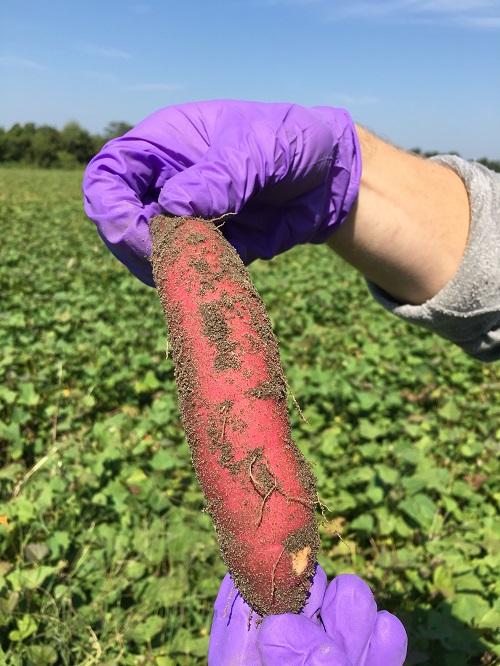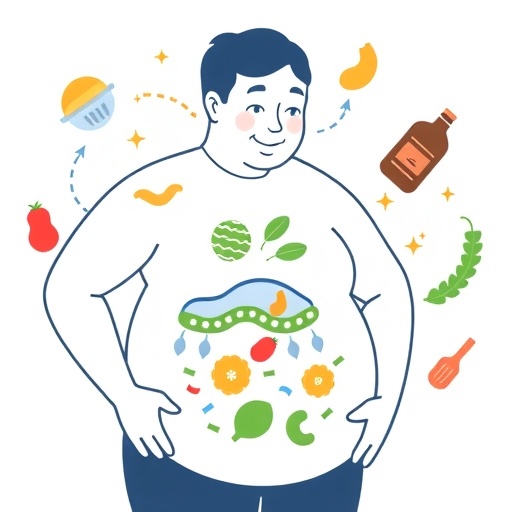
Credit: Brooke Bissinger
Grown around the world, sweet potatoes are an important source of nutrition particularly in sub-Saharan African and Asian diets. Sweet potatoes are especially significant to sub-Saharan Africa as a source of Vitamin A, a nutrient commonly deficient in the region. While China currently produces the most sweet potatoes by country, sub-Saharan Africa has more land devoted to sweetpotatoes and continues to expand production. Farmers elsewhere are also increasingly growing sweetpotatoes.
Despite the importance of sweet potato, little is known about the sweet potato microbiome. “A plant’s microbiome profoundly impacts its health and development,” explains Brooke Bissinger, an entomologist who recently published a study on sweet potatoes in Phytobiomes Journal. “We sought to better understand the sweet potato microbiomes by characterizing it within and between actual working farms.”
Bissinger and her colleagues work for AgBiome which was funded by the Bill & Melinda Gates Foundation to identify and develop beneficial microbes that would protect sweet potatoes in the developing world from insects. They used this opportunity to characterize the sweet potato microbiome in order to inform their project and provide information for other researchers interested in similar work.
They found that, similar to more popularly studied crops, the sweet potato microbiome follows the two-step model of development.
“We demonstrated a striking variability in the microorganisms that make up the sweet potato microbiome across a single farm. Despite this variability, we found commonalities in how the microbiome develops across fields within a single sweet potato farm and across two farms in the same region,” says Charles Pepe-Ranney, microbial genomics data scientist and lead author of the paper.
This is the first study to characterize the sweet potato microbiome using modern, next-generation sequencing technology–an important first step towards leveraging the microbiome to improve sweet potato yield.
“Also of note, our study suggests that the sweet potato presents a strong ecological challenge to its endophytes (microbes that live inside a plant),” says Pepe-Ranney. “If we are going to develop a sweet potato endophyte that protects sweetpotatoes from pests, for example, this sweet potato-beneficial endophyte must be able to withstand the strong ecological pressure from the sweet potato itself.”
For more information, read “Surveying the Sweetpotato Rhizosphere, Endophyte, and Surrounding Soil Microbiomes at Two North Carolina Farms Reveals Underpinnings of Sweetpotato Microbiome Community Assembly” published in the March issue of the open access Phytobiomes Journal.
###
Media Contact
Ashley Bergman Carlin
[email protected]
Related Journal Article
http://dx.





